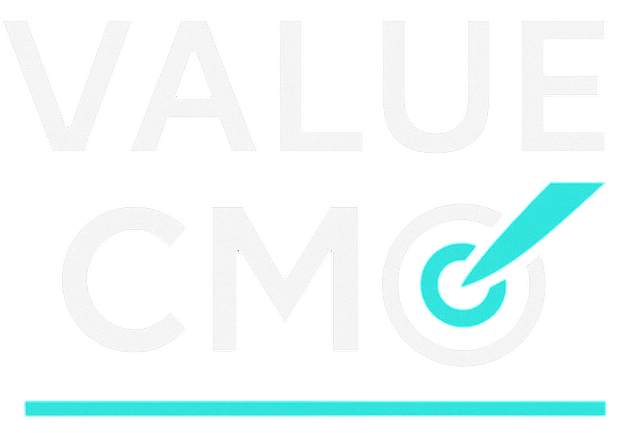B2C Tactics for B2B Marketing Success: 7 Proven Ways to Win Hearts and Deals in 2025
Introduction
For decades, B2B marketing lived under a stubborn myth: that business decisions are cold, rational, and logic-driven. Numbers, specifications, and ROI ruled the conversation, while emotion was considered irrelevant, even distracting. But as both research and real-world practice now reveal, this narrative is fundamentally flawed.
The truth? Behind every business deal is a human being — with aspirations, fears, ambitions, and emotions. When executives approve a million-dollar contract, they are not just evaluating technology; they are safeguarding careers, protecting reputations, and chasing professional wins. The stakes are higher than in consumer purchases, which makes emotional connection, trust, and confidence even more critical.
This realization has triggered a marketing revolution: B2B is learning from B2C. The tactics that make consumer brands beloved — emotional storytelling, hyper-personalization, social engagement, loyalty ecosystems — are increasingly driving success in B2B campaigns.
This article explores how B2C tactics for B2B marketing success can reshape strategies, elevate customer experiences, and drive long-term growth.
B2C Tactics for B2B Marketing Success
Adopting B2C strategies for B2B is not about mimicking consumer marketing. It’s about translating principles of empathy, relevance, and connection into complex buying environments.
B2C marketing excels at grabbing attention, winning trust, and fostering loyalty. By borrowing these proven techniques, B2B brands can stand out, build stronger relationships, and drive predictable revenue growth.
From Logic to Emotion
The idea that B2B decisions are purely rational is crumbling. Research by Google and Gartner shows that B2B brands often score higher on emotional connection than consumer brands.
Why? Because the risk is greater. A failed B2B partnership can damage a career, while a successful deal can define it. Trust, confidence, and credibility shape decisions long before ROI calculators enter the conversation.
Emotional Storytelling in B2B
B2C storytelling thrives on relatability. In B2B, storytelling builds reassurance and confidence. Make your customer the protagonist. Your product or service is the guide.
Case Studies as Human Stories
Reframe your case studies with this structure:
- The problem faced by a relatable character (e.g., CTO, procurement manager).
- The solution journey — discovery, adoption, and use.
- The outcomes — emotional and business impacts.
When you anchor statistics in human impact, data becomes memorable.
Building Trust with Authenticity
Buyers want honesty, not perfection. Share internal struggles, employee voices, and challenges overcome. Brands like EY and Dell show that authenticity scales even in enterprise contexts.
Hyper-Personalization in B2B
B2B buyers expect the same personalization they get as consumers. The difference? Multiple stakeholders, each with different concerns.
Leverage dynamic, data-driven content to serve the right message to the right role at the right time.
Dynamic Buyer Journeys
Smart websites adapt content in real time. Tailor by role, industry, or behavior — this builds trust before the first call.
Marketing Automation for Personalization
- Trigger personalized email sequences.
- Alert sales when prospects engage deeply.
- Deliver role-specific case studies automatically.
Using Behavioral and Contextual Data
Personalization runs on:
- Firmographic data: company size, industry, role.
- Behavioral data: downloads, webinars, trials.
- Contextual data: device, location, time.
B2C Lessons in Customer Experience
Apple and Amazon have set the standard. B2B buyers expect onboarding, support, and ease of use at the same level.
- Clear tutorials and training
- Proactive support
- Mobile-ready interfaces
Community and Loyalty in B2B
Loyalty in B2B means ecosystems. Programs like Salesforce Trailblazer and HubSpot Partners turn customers into co-creators.
Advocacy and Peer Influence
Buyers trust peers more than ads. Create spaces where customers can tell your story for you.
Partner Programs that Drive Growth
Adobe, IBM, and Microsoft offer co-marketing, training, and revenue-sharing. Loyalty is earned through shared success.
Social Media as a Human Connector
LinkedIn, X, and YouTube are modern B2B engagement platforms. Use them for discussion, storytelling, and thought leadership.
Employee-Driven Brand Storytelling
Feature real voices and internal culture. Campaigns like #LifeInsideDropbox build connection from the inside out.
Influencer Marketing for B2B
In B2B, influencers are thought leaders, practitioners, and customers. Their credibility becomes your credibility.
Customer-Generated Content
Showcase user-created content like tips, examples, and case studies. Adobe excels here — turning users into advocates.
Content Formats that Resonate
Replace static PDFs with:
- Explainer videos
- ROI calculators
- Podcasts with real users
- Interactive tools
Brand Storytelling with Purpose
Apple sells creativity, Nike sells inspiration. Zoom’s “Work Happy” campaign reframes meetings as connection. What do you sell?
Human-to-Human (H2H) Marketing
All marketing is H2H. Buyers want to feel seen, heard, and valued. B2C tactics deliver that in B2B too.
Overcoming B2B Challenges
Long sales cycles, multiple buyers, and pressure to prove ROI are real. But empathy, storytelling, and smart automation reduce friction.
Technology as the Invisible Hand
AI and automation don’t replace relationships — they support them. Use them to scale personalization and free humans to be human.
The B2B Adaptation Matrix
| B2C Tactic | B2B Adaptation |
|---|---|
| Emotional storytelling | Selling confidence, reducing risk |
| Personalization | Multi-stakeholder, role-based journeys |
| Loyalty programs | Ecosystems, advocacy, partnerships |
| Influencer marketing | Industry experts, thought leaders |
| Social engagement | Humanized, conversational LinkedIn/X presence |
Future of B2B Marketing
The future belongs to brands that combine proof with empathy. Humanize. Personalize. Build communities. The payoff? Long-term trust and partnerships.
Conclusion
B2C tactics aren’t invading B2B — they’re reshaping it. Emotional storytelling, personalization, community building, and authenticity are now central to B2B success.
Brands that market like humans will win not just contracts — but loyalty.
FAQs
- What are B2C tactics in B2B marketing?
- Consumer-style strategies like personalization, emotional storytelling, loyalty ecosystems, and influencer engagement, adapted for B2B environments.
- Why is emotional storytelling important in B2B?
- Because buyers are humans first. Trust and confidence often shape decisions before logic and spreadsheets do.
- Can personalization work in complex B2B deals?
- Yes. With data, automation, and role-based content, B2B brands can address each stakeholder effectively.
- How does social media help B2B marketing?
- It humanizes brands, fosters community, and amplifies voices — creating trust and engagement.
- Are loyalty programs relevant in B2B?
- Absolutely — but they focus on partnerships and advocacy, not points or coupons.
- What’s the future of B2B marketing?
- A blend of storytelling, personalization, and human connection — all supported by smart automation.
Interested in Fractional CMO (outsource marketing) services? Click here

